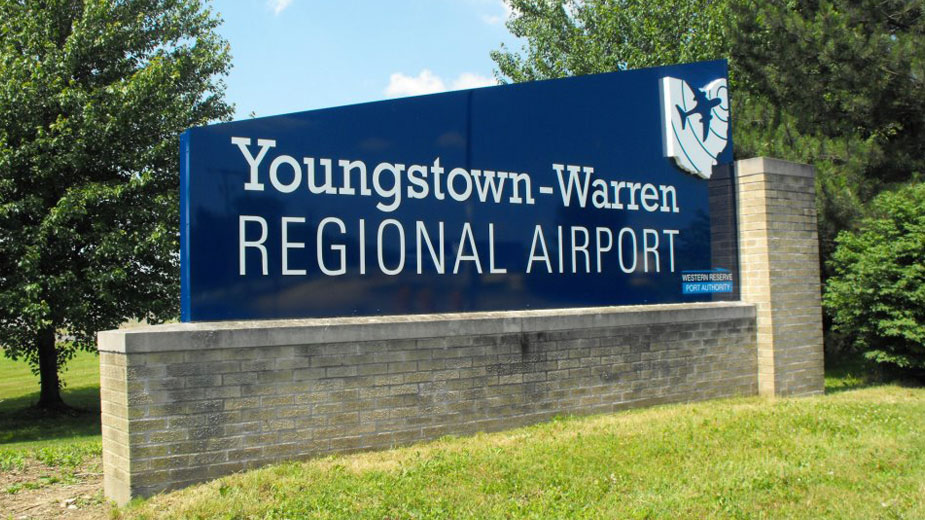LED3 Lights Up Stambaugh Stadium’s New Scoreboard
YOUNGSTOWN, Ohio – Between the third and fourth quarters of every Youngstown State University football game at Stambaugh Stadium, Cab Calloway’s rendition of “Minnie the Moocher” blasts through the speakers and lights up the video board at the northern end of the field.
This season, with the help of a new screen, fans should be able to see the individual gray hairs in the scat singer’s mustache as he belts out his famous “Hidey Hidey Hidey Hi.”
Built by LED3, Canfield, the new board – 20 feet by 35 feet – is nearly three times the size of the previous, decade-old board and has twice the clarity.
“That allows you to do a lot of text and graphical elements,” says LED3 director of operations Tim Jarmain. “The capabilities are endless. You can do whatever what you want with this system.”
The board is the biggest LED3 has ever assembled, says company President Bruce Neff, and cost between $350,000 and $400,000.
Last year, LED3 put together a new scoreboard for Canfield High School’s football stadium and recently put up temporary boards at the U.S. Capitol Building. Other projects the company has completed were at the Hollywood Bowl in Los Angeles and the Cleveland Museum of Art.
“This is a very exciting project that’s at the top of our list. It’s the largest university order that we’ve been able to fulfill,” Neff says. “For the sports marketplace, this is the very top. We’re thrilled that we’ve been able to get a hometown project and provide a quality product that’s able to give them a long life and great performance.”
The board consists of 42 LED panels, each about 3½ feet tall and 5 feet wide, produced by Absen, a Chinese producer of the small lights. LED3 puts the panels into cabinets, complete with the necessary wiring and installs them.
“They’re assembled one at a time like a little game of Tetris,” explains Jarmain, who also serves as the project manager.
“You start in the bottom left and build across and up from there to create your data chain. We plan it all out early. It requires a lot of coordination on each player’s part.”
Putting together the new video board began in June with the removal of the old board and sponsor advertisements. The paint was stripped off the support structure so it could be inspected for any damage in need of repair.
“There was a lot of rust and other effects from the elements. We had to clean that up and evaluate the steel structure,” Jarmain says. “We were lucky that this had held up over time.”
Because of the constant rain throughout June, stripping and repainting the framework was delayed a couple weeks, says Jarmain, who worked on the video team at Ohio Stadium during Jim Tressel’s time there as head football coach.
With the larger board, the structure had to be widened at each end and to help balance the structure, so the screen was extended forward three feet.
LED3 brought on Boardman Steel, Columbiana, to deliver and install the new supports and Mount Construction, Mercer, Pa., to help put the board into place.
The scoreboard at the south end of the stadium was also upgraded, replacing the board built by White Way, since gone out of business, that built marquees for several famous buildings in Chicago, including Wrigley Field.
“It was older technology that needed to be updated. The board that we put in is an LED-driven board, so the viewing angle is great,” Jarmain says. “Every seat that wasn’t able to see it before can see it now. It’s a bigger board, too.”
The new boards are also simpler to use, he continues.
In the press box atop the western grandstand, a single laptop computer controls the north video screen while a small box with a number pad controls the scoreboard to the south. The old controls were analog dials, the project manager says.
“With the LED board, it’s basically turning it on and sending whatever you want through the switcher,” he explains. “The scoreboard is an interactive piece with two people who will set the time and clock and update the stats as they go.”
Perhaps the most fun addition to the video screen is the ability for the stadium crew to show live shots of the fans.
“Anything you want to do with fans, you can do now. We can run wireless cameras into the switch to do the fun, goofy stuff that everyone enjoys at the game,” Jarmain says. “The fan experience will be expanded tremendously. It gives you the opportunity to add any kind of period breaks and fan inclusion.”
The project is an important one for LED3, the company president says. Many workers at the company are YSU alumni, including Neff, who earned his teaching certificate at the university.
“It’s very fulfilling. We’ve been all around the country and we’re finally able to come back home,” Neff says. “We’re happy to be able to deliver such great project and get really involved in YSU’s digital media efforts.”
Pictured: Testing the new scoreboard are Dave Hinkle, video board manager for YSU’s athletics department, Bruce Neff, LED3 president, and Lynn Roman, LED3 development manager.
Copyright 2024 The Business Journal, Youngstown, Ohio.



